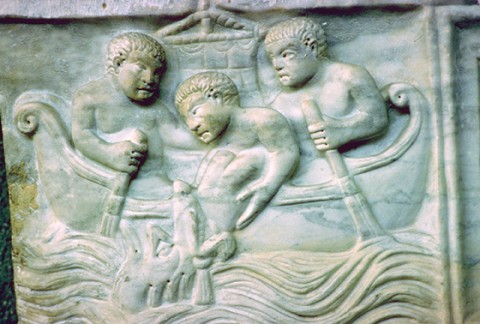Jonah and the Whale, from an early Christian marble sarcophagus in Rome (fourth century)

Scenes from the story of Jonah were among the most popular in early Christian art. The Old Testament story of the reluctant prophet who, after a detour in the belly of a whale, travels to Nineveh to proclaim God’s message was compelling in its own right. This fourth-century Christian sarcophagus depicts the moment in which Jonah is tossed overboard in an effort to quell a raging storm that threatens the lives of all those aboard. The story took on additional meaning for early Christians, who interpreted Jonah’s emergence from the whale after three days as referring typologically to Jesus’ death and resurrection. This interpretation is found very early in Christian tradition (see Matthew 12:38–42) and grew in popularity over the next several centuries.




